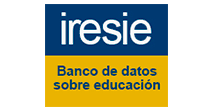Violência e juventude em Goiás: narrativas dos jovens de escolas públicas
DOI:
https://doi.org/10.5216/ia.v43i2.52504Abstract
Objetivamos analisar a narrativa dos jovens das escolas públicas de Goiás acerca das relações entre violência e juventudes. As narrativas foram obtidas por meio da realização de rodas de conversa e questionário com 271 jovens do 3o ano do ensino médio de escolas estaduais em quatro cidades goianas marcadas por altos índices de violência: Aparecida de Goiânia, Goiânia, Luziânia e Rio Verde. Pode-se concluir que as narrativas dos jovens revelam matizes importantes para compreender o fenômeno da violência juvenil, pois de um lado ecoa o discurso hegemônico de que o jovem é violento, e de outro, narrativas que reconhecem os jovens como vítimas do sistema e apontam a importância das instituições e da ação estatal para o enfrentamento da violência.
Downloads
Downloads
Published
How to Cite
Issue
Section
License
Inter-Ação uses the Creative Commons Attribution 4.0 License for Open Access Journals (Open Archives Initiative - OAI) as the basis for the transfer of rights. Open access means making documents available on the Internet free of charge, so that users can read, download, copy, distribute, print, search, or link to the full text of documents, process them for indexing, use them as input data for software programs, or use them for any other lawful purpose, without financial, legal, or technical barriers.
Authors publishing in this journal agree to the following conditions:
1) Authors retain copyright and grant the journal the right of first publication, with the work simultaneously licensed under the Creative Commons Attribution License, which permits redistribution of the work with attribution and first publication in this journal.
2) Authors are permitted to enter into additional, separate agreements for non-exclusive distribution of the version of the work published in this journal (e.g., for publication in an institutional repository or as a book chapter), with attribution and first publication in this journal.
3) Authors are permitted and encouraged to publish and distribute their work online (e.g. in institutional repositories or on their home page) at any time before or during the editorial process, as this may generate productive changes as well as increase the impact and citation of the published work.















